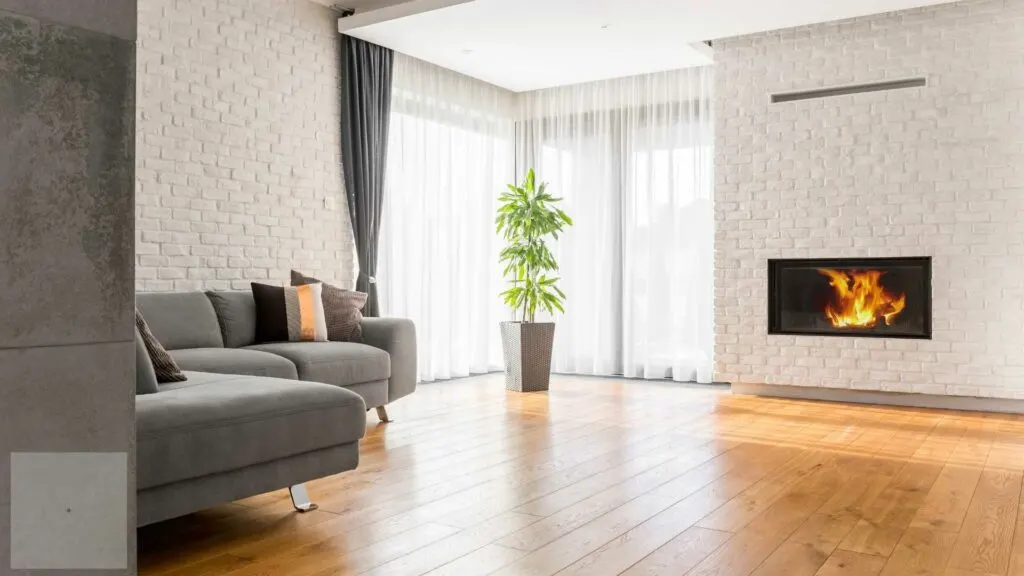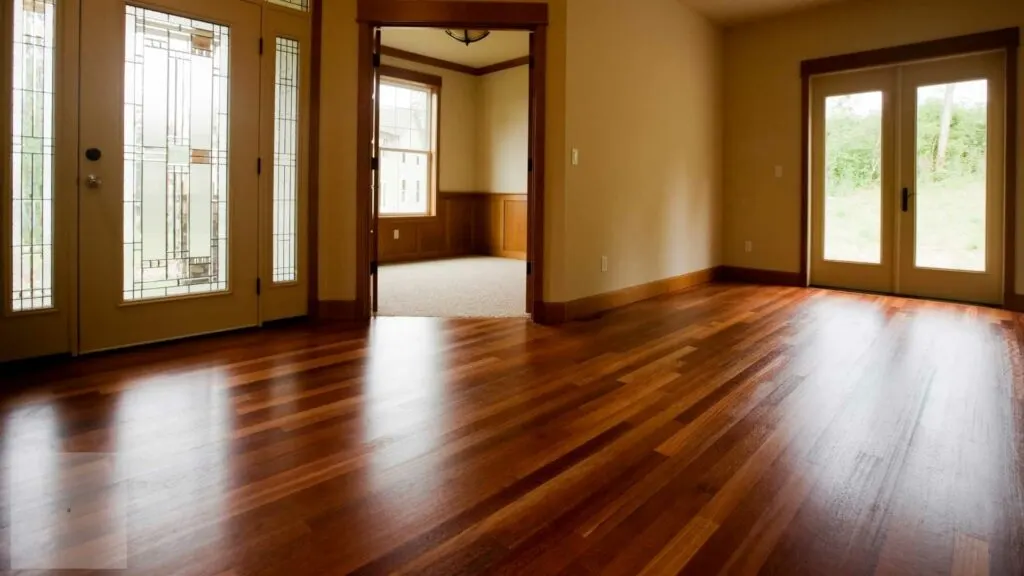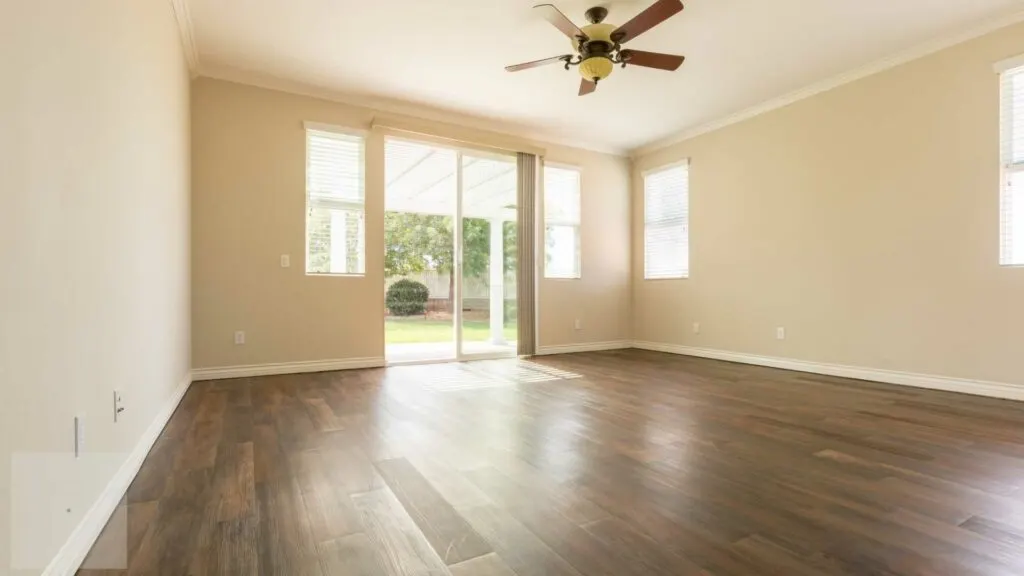Hardwood floors are a timeless choice for residential and commercial spaces, offering aesthetic appeal and durability. The selection of an appropriate finish is crucial, as it enhances the wood’s appearance and provides essential protection against wear and stains. Here, we’ll summarize the key finishes available and their main characteristics, so you can decide which suits your taste and needs best.

Types of Hardwood Floor Finishes
Before talking about different finishes, let’s explain what a hardwood floor finish is. It’s a protective layer on the wood’s surface that guards against wear, moisture, and stains. It also affects how your floors look and feel. People have been finishing wood for centuries using oils and waxes. Today, there are many advanced finishes available. In 2020, the global wood coatings market was worth $8.59 billion and continues to grow, showing the importance of wood finishes. For example, hardwood floor refinishing in Hamilton is becoming increasingly popular as it not only preserves the aesthetic value of the floors but also adds to the overall property value. Many local businesses offer specialized services, catering to various preferences and budgets.
Choosing the right finish for your hardwood floors can feel like picking the perfect meal from a menu – each option has unique flavour and benefits.
Different Types of Hardwood Floor Finishes
| Type of Finish | Pros | Cons |
| Oil-Based Polyurethane | Highly durable, rich and warm look, resistant to heat and water | Strong odor, long drying time, contains VOCs |
| Water-Based Polyurethane | Fast drying time, low odor, maintains wood’s natural color, easy cleanup | Less durable, may require more coats, generally more expensive |
| Moisture-Cured Urethane | Extremely durable, excellent resistance to water and chemicals, suitable for high-humidity areas | Difficult to apply, strong odor, limited color options |
| Aluminum Oxide | Extremely durable, highly resistant to scratches, low maintenance | Cannot be site-applied, difficult to repair, more expensive |
| Natural Oils | Enhances natural look, easy to spot-repair, non-toxic | Less durable, requires frequent maintenance, may darken some wood species |
| Hard Wax Oil | Natural matte finish, easy to apply and repair, low VOC content | Less water-resistant, requires regular maintenance, can be more expensive |
Each type of finish has its strengths and weaknesses, making it important to consider your specific needs, preferences, and the conditions of your home when making a choice.

Factors to Consider When Choosing a Finish
- Durability Requirements: Assess the expected foot traffic and potential wear. High-traffic areas may benefit from robust finishes such as oil-based polyurethane or conversion varnish. For homes with pets or children, consider consulting a professional flooring specialist for tailored recommendations.
- Aesthetic Preferences: Determine your desired appearance. Options range from high-gloss to matte finishes. Oil-based finishes tend to impart a warmer tone over time, while water-based finishes generally preserve the wood’s natural color. Natural oils and hard wax oils offer an attractive matte finish.
- Maintenance Expectations: Consider the level of upkeep you’re willing to commit to. Natural oil finishes may require reapplication every 1–2 years, whereas polyurethane finishes can last 5–10 years before needing attention.
- Environmental Considerations: For those prioritizing eco-friendly options, water-based polyurethane, natural oil, or hard wax oil finishes typically have lower VOC content. Look for products with environmental certifications, such as Greenguard or LEED.
- Project Timeline: Factor in drying and curing times. Water-based polyurethanes mostly dry faster than oil-based alternatives. However, all finishes require several days to fully cure.
- Budget Considerations: Evaluate both initial costs and long-term maintenance expenses. In some cases, a higher upfront investment in a more durable finish may prove more economical over time.
- Health Factors: If allergies or chemical sensitivities are a concern, consider natural, low-VOC finishes like natural oils or water-based polyurethanes to promote a healthier indoor environment.

Popular Trends in Hardwood Floor Finishes
Staying aware of current trends can help you choose a finish that not only protects your floors but also enhances your home’s aesthetic appeal:
1. Matte and Satin Finishes. Low-sheen finishes like matte and satin offer a natural look and can hide minor scratches better than glossy finishes.
2. Gray and Whitewashed Tones. Finishes that give wood a weathered or bleached look are popular, especially in coastal or modern homes.
3. Site-Finished Floors. There’s a trend towards site-finished floors for their customization and seamless appearance, allowing for a wider variety of finishes.
4. Eco-Friendly Finishes. With growing environmental awareness, there’s increased demand for low-VOC and natural oil finishes.
5. Textured Finishes. Wire-brushed and hand-scraped finishes add texture and hide wear, offering a unique look.
6. Dark and Light Extremes. Very dark and very light finishes are trending, creating bold contrasts in interior design.
7. Mixed Width Planks. Using planks of varying widths can create visual interest and enhance the look of the finish.
Summary
Choosing the right finish for your hardwood floors impacts their look and longevity. Consider factors like durability, appearance, maintenance, environmental impact, and cost. While trends can inspire, the best choice depends on your specific needs and preferences.

Jessi is the creative mind behind The Coffee Mom, a popular blog that combines parenting advice, travel tips, and a love for all things Disney. As a trusted Disney influencer and passionate storyteller, Jessi’s authentic insights and relatable content resonate with readers worldwide.
